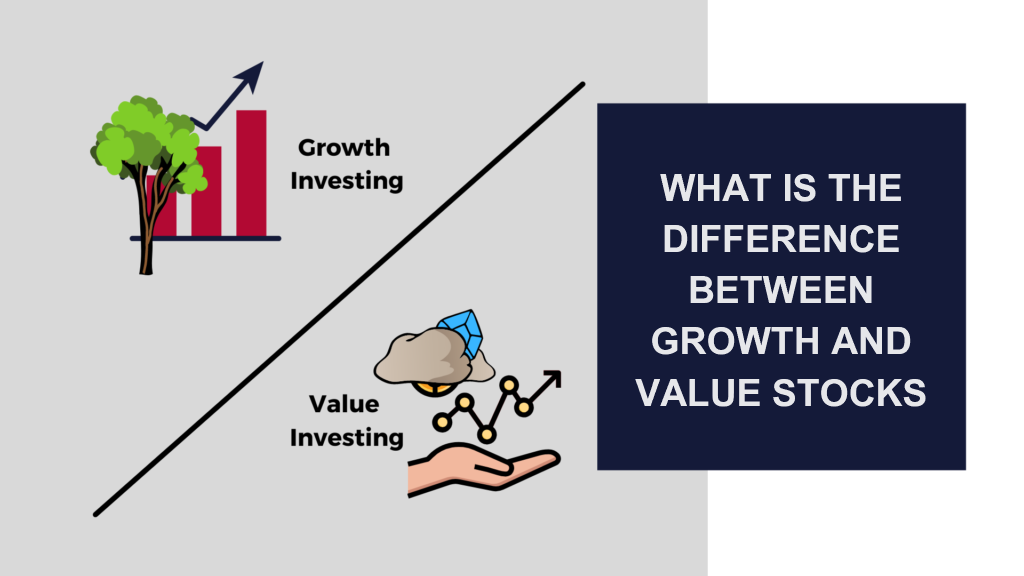Times change, and so should your retirement planning in the current stock market climate. I get it; markets today go wild. Up today, down tomorrow, it’s a roller coaster that can rattle even seasoned investors. But here’s the rub: it’s not about dodging the swings—it’s about strapping in for the ride and coming out on top. Whether you’re just starting out or you’re eyeing that retirement beach chair, I’ll guide you through understanding the market’s impacts, mastering risk, and making smart moves to keep your retirement plan on track. Let’s roll up our sleeves and dive into crafting a strategy that lets you thrive, no matter what the stock ticker throws our way.
Understanding the Current Stock Market and Its Impacts on Retirement
Analyzing Stock Market Volatility and Its Effects on Retirement Portfolios
Market ups and downs affect your nest egg. Stocks may soar or plummet. This impacts your retirement goals. To thrive, not just survive, you need to understand this dance.
Let’s dive in. What causes stock market volatility? Many factors: company news, global events, or economic shifts. These make stock prices jump or dip often. For retirees, this can be worrisome. You’re not alone. Many folks watch their plans sway with the market waves.
So, what can you do? First, look at your mix of stocks, bonds, and cash. This mix is called your asset allocation. Your age, goals, and comfort with risk shape it. It might need a tweak as markets move.
Young? You can often take more stock swings. Closer to retirement? You may need less risk. A financial advisor can help set this up right. They tailor a plan for your needs. Ready for a deeper look? Keep reading.
The Importance of Risk Management in Protecting Retirement Funds
Risk is part of investing. But too much can hurt your future funds. A big dip right before retirement can disrupt your plans. To manage this, think about diversifying. In simple terms, don’t put all eggs in one basket.
Spread your investments. Think stocks, bonds, and maybe real estate. A jolt in one shouldn’t break your whole portfolio. You can find balance. Balance can mean smoother sailing in rough market seas.
Pension funds and social security offer some safety nets. But they might not cover it all. You also want to protect against inflation. Over time, rising costs can eat into your savings. An advisor can teach you about ‘real return’. This considers inflation, so you see how much your money really grows.
Catch-up contributions are another tool. Over 50? The IRS lets you put extra money into your 401(k) or IRA. This helps you buffer your savings against market swings.
Here’s what to take with you. The stock market will go up and down. But with the right plan, your retirement doesn’t have to. Diversify, stay calm, and keep an eye on the long-term prize. Your future you will thank you.
Strategic Retirement Investment Approaches in a Fluctuating Market
The Role of Diversification: IRA, 401(k), and Other Retirement Accounts
To win at retirement, don’t keep all your eggs in one basket. This means spreading your savings across different types of accounts. This way, you ride out stock market ups and downs. You might have a 401(k) or an IRA. Great! But let’s mix it up more.
You might ask, “Why should I diversify my retirement accounts?” Good question! Diversifying means you have different types of investments. So, if stocks fall, you don’t lose all at once. It’s like having different trails to the same mountaintop. Some might get rocky, but others will be smooth.
Now, think about your future. How far is retirement? This decides how you spread out your money. If retirement is far, you can face more ups and downs. But if it’s soon, you want less risk. Your 401(k) can have stocks, but maybe your IRA sticks with safer options.
What options do you have? Stocks, bonds, real estate, and even cash all play a part. Stocks can grow fast but are risky. Bonds are steadier but grow slower. Real estate can be a solid investment, while cash gives you quick access. Mixing these makes a strong shield against market swings.
Let’s talk about something cool – “asset allocation.” This means deciding what portion of your money goes where. It changes over time. As you get close to retiring, you might reduce stocks and increase bonds. That’s playing it smart for your golden years.
Aligning Investment Strategies with Long-Term Retirement Goals
Dream about your perfect retirement. Maybe it’s traveling, hobbies, or just relaxing at home. To get there, make sure your investment choices line up with your goals. How so? Let’s dive in.
Your long-term retirement savings should grow safely over time. It’s not about fast cash; it’s about building over years. For this, know where to put your money and how much.
Let’s say you’re aiming to retire in 20 years. You’d want a good mix of investments. Stocks for growth, bonds for safety, and real estate for steady income. This mix should match your future plans.
If you’re closer to retirement, maybe you shift gears. Less in stocks, more in bonds, to protect what you’ve built. You don’t want a market dip wiping out years of saving right before you stop working. So, adjust your allocation.
And don’t forget, keep an eye on pension funds, social security, and other benefits. These can be a big part of your retirement income. Know what you’ll get from them. It helps you plan how much you need to save on your own.
Remember, the market will always go up and down. But with the right mix and a solid plan, you’re set. It’s like weatherproofing your house before a storm. When the winds come, you’ll stay cozy and dry.
Adjusting Your Retirement Plan in Response to Market Changes
Rebalancing Your Portfolio: A Tool for Mitigating Market Risks
You’re riding the waves of the stock market. Smart moves keep you afloat. When stocks zigzag, it’s time to check your plan. We can’t control the market, but we can control how we respond. That’s where rebalancing your portfolio comes in.
Now, what is rebalancing? It’s a way to get your investments back on target. As some stocks go up and others go down, your goals can drift off course. A yearly check can put you back on track. This means selling some things and buying others. It’s like tuning up a bike so it rides smooth.
Let’s dig a bit deeper. Say you want half stocks, half bonds. Stocks did well; now they’re 70%. Too risky? Maybe. So, you sell some stocks. You buy bonds. Now it’s 50-50 again. Less risk, and you still aim for your goals.
But it’s not just set and forget. Checking more as you near retirement is wise. You might shift to fewer stocks, more bonds then. This can help calm the ride when the market gets wild.
Incorporating Annuities and Bonds to Stabilize Retirement Income
Annuities and bonds sound dull, but peace of mind isn’t. Annuities are like DIY pensions. They give you cash each month, no matter the market. Bonds are loans you give to companies or the government. They pay you back with interest.
How does an annuity work? You give a lump sum to an insurance company. They send you a check each month for life. It’s a bet. You’re betting you’ll live long, they bet you won’t. They win some, you win some.
And bonds? When stocks dive, bonds often float. So, you still earn some money even when stocks are down. This helps when you need money but don’t want to sell stocks cheap.
Retirement planning can feel like gardening. You plant seeds, you water, you wait. You pull weeds and protect against pests. The market’s ups and downs? They’re just seasons. Plan well, and you can harvest no matter the weather.
Now, keep in mind, no one plan fits all. A financial advisor can tailor to your needs. Think of them as your gardening guide. They know the soil, the seeds, and when to harvest.
Remember, rebalancing and diversifying help weather market storms. Bonds and annuities can be safe harbors when waves get high. Tuning your plan to the market’s tune helps you retire not just in peace, but with a smile.
Preserving Retirement Savings Against Economic Factors
Strategies to Offset the Impact of Inflation on Retirement Savings
Inflation can eat away at your savings. How can you fight this? Start with the right mix of investments. Put your money in stocks, bonds, and real estate. Yes, the stock market can be wild, but over time, it often beats inflation. Bonds can add a safety net. Real estate can grow in value too. Now, let’s add some special accounts to the mix. Think about IRAs and 401(k)s. They come with tax perks that help your savings grow faster. You want a financial advisor? They can help make a plan that fits you like a glove.
What if inflation gets really high? You have options. There are special bonds called TIPS. They go up with inflation, so you won’t lose ground. Also, try adding some international investments to your portfolio. They can act different from U.S. stocks and balance things out. Always remember to check on your mix of investments each year. This makes sure you still match your risk level and goals.
Developing Tax-Efficient Withdrawal Plans to Maximize Retirement Income
When you retire, you’ll need to pull money out of your savings. The goal is to do this in a smart tax way. So, how do you do it? Think about which accounts to tap into first. Each type, like IRAs or 401(k)s, has different tax rules. Pull from taxable accounts first. Then move to tax-deferred and tax-free ones. This can help your savings last longer.
A good plan looks at taxes now and later. Don’t just focus on today’s tax bill. Think about the future too. Use up IRA money before taking Social Security. This can mean a lower tax bill when you get your benefits. If you’re 72 or older, you have to take money out of certain accounts. This is called an RMD, or required minimum distribution.
Don’t like the idea of taxes shrinking your checks? One word – Roth. With a Roth IRA, you pay taxes before you put money in. Later, when you take the money out, it’s tax-free. Plus, no RMDs. That’s right, none!
One more tip – Look into catch-up contributions if you’re 50 or older. They let you put more into your retirement accounts. This can really boost your savings.
Life’s golden years should be stress-free. Smart moves now can save you worries later. Keep an eye out for taxes. Stay flexible with your savings. Talk with a pro if you need to. Together, we can make sure you thrive in retirement, not just survive.
In this post, we explored the choppy waters of today’s stock market and its impact on retirement. We dug into how volatility influences our nest eggs and stressed the need for solid risk management. We also looked at wise investment moves, like spreading out risk through different accounts and making sure our plans are set for the future.
But markets shift, and so must our strategies. That’s where tweaking our portfolios and mixing in annuities and bonds come into play. They help smooth out the bumps along the way. Lastly, we can’t let inflation eat away our hard-earned savings, and we’ve got to keep an eye on taxes too.
As you chart your path to retirement, keep these insights close at hand. Staying sharp and shifting strategies when needed will help steer you toward a more secure future. And remember, a sturdy plan today leads to a brighter, stress-free retirement tomorrow. Stay informed, stay flexible, and trust the plan you’ve set to work for you.
Q&A :
How should I adjust my retirement planning strategy given the current stock market volatility?
When facing a volatile stock market, it’s crucial to focus on long-term objectives and not make hasty decisions based on short-term fluctuations. Diversifying your investment portfolio to include a mix of stocks, bonds, and other assets could help mitigate risk. It may also be wise to revisit your risk tolerance and adjust contributions towards more conservative options if you are nearing retirement. Consulting with a financial advisor to review and possibly rebalance your investments in response to the current market trends is generally a sensible approach.
What are the best investment strategies for retirement planning in a bearish stock market?
In a bearish market, one of the best strategies could involve dollar-cost averaging, where you invest a fixed amount of money at regular intervals, no matter the market conditions, which helps in purchasing more shares when prices are low. Another strategy might be to focus on high-dividend stocks or value stocks that have the potential to provide returns over time. It’s also beneficial to focus on industries that are recession-resistant and maintaining a well-balanced portfolio including bonds and other less volatile assets.
Is now a good time to shift from stocks to bonds for retirement planning?
Timing the market can be challenging, and individual circumstances vary greatly, so there’s no one-size-fits-all answer. Typically, as individuals approach retirement age, financial advisors recommend shifting towards a more conservative portfolio, which often includes a larger allocation of bonds. Bonds generally offer more stability than stocks, which may be appealing in a fluctuating market. However, considering the current interest rate environment is essential, as rising rates can decrease bond values. Consulting with a financial advisor for personalized advice is recommended.
How can I protect my retirement savings from a potential market downturn?
To protect your retirement savings, it’s essential to have a diversified portfolio that spreads risk across different asset classes. Consider including fixed-income securities, such as bonds or Treasury securities, which are less affected by market downturns than stocks. You may also look into other avenues like real estate, commodities, or potentially annuities, which can provide a steady income stream. Establishing an emergency fund outside of your retirement accounts can help you avoid having to withdraw from your investments during a market dip.
What impact could inflation have on my retirement planning in the current economic climate?
Inflation can erode the purchasing power of your savings over time, making it a crucial factor to consider in retirement planning. It’s essential to seek investments that have a history of outpacing inflation. Stocks, real estate, and certain types of bonds, like Treasury Inflation-Protected Securities (TIPS), are commonly regarded as having the potential to grow faster than the rate of inflation. Regularly reviewing and adjusting your retirement plan to account for inflation predictions can help ensure that your savings maintain their value over time.






